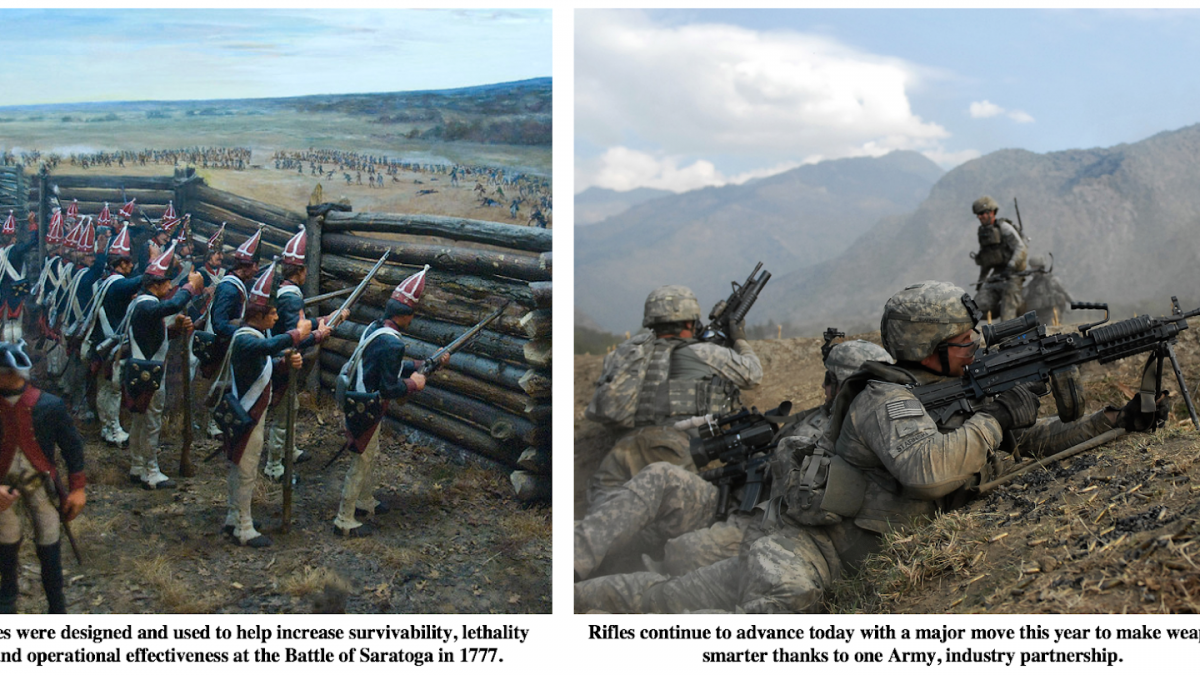
Five Ways the T-Worx Intelligent Rail® Platform Can Increase Battlefield Lethality, Survivability
May 6, 2019
‘Intelligent-Rail’ Software Destined for Next-Gen Squad Weapon
July 6, 2019Defense tech start-up renews tradition of innovation; sharpens Army, industry partnership
Afghanistan is a “rifleman’s war,” Staff Sgt. Jeffrey Wall, then a rifle instructor with the California National Guard, wrote in “Small Wars Journal” a few years ago. Throughout the war, squads of soldiers have engaged larger enemy forces, often at 500-plus meters. Soldiers’ rifles and skill mean life or death, victory or defeat.
Backed by industry partners such as T-Worx Holdings, rifles could soon become smarter, soldiers more lethal. After 10 years of research and development, the company expects that its NATO-standard Intelligent Rail®, which meets the Army’s Picatinny Smart Rail requirements, will also improve situational awareness.
This pioneering technology, the first of its kind since the Vietnam War, builds on a tradition that dates from the American Revolution, when Continental sharpshooters revolutionized warfare. An elite group of riflemen, commanded by Col. — later Brig. Gen. — Daniel Morgan, proved that the rifle, then new and largely untested, could increase survivability, lethality and operational effectiveness.
At the Battle of Saratoga, New York, in 1777, they targeted British officers and artillerymen, sowing confusion and helping neutralize the vaunted British cannons. According to historians, the American victory at Saratoga was a turning point in the war. It was also the beginning of a tradition of grit and innovation, and a new partnership between the military and industry that made victory possible.
Today, private companies like T-Worx Holdings are continuing that relationship. T-Worx has collaborated with the Army to turn the rifle into a weapon that could win the wars of the 21st century and beyond. It should also improve situational awareness and operational effectiveness, and make soldiers safer and more lethal than ever before.
T-Worx’s patented Intelligent Rail, the product of 10 years of research and development, connects and powers a rifle’s accessories via its networked Rail Operating System (ROS), which enables the Army’s existing battlefield communications network to capture and use information and intelligence never before available in real-time.
Examples include the exact location of the weapon, the number and frequency of bullets fired, and livestream video data. The ROS also enables additional capabilities like on-weapon push-to-talk communication, and communication between optics, as well as many others that will emerge with future apps developed to improve situational awareness for soldiers and commanders. Improved communications are expected to create a more dynamic, connected battlefield.
“Weapons in the 1960s were about night stealth; in the 1970s, laser-guided bombs; in the 1980s, GPS; in the 1990s, predator drones; and in early 2000, armed-predator drones,” said retired Gen. John Campbell, a T-Worx advisor. “The I-Rail® enables soldiers to communicate, designate, target and have a common caliber of ammunition. You can see farther, be more accurate, use one ammo and be on target with one shot. When the U.S. gives our soldiers every advantage to have a fair fight, it’s about the weapons and technology delivered to them.”
The Army recently announced that the NATO-Standard I-Rail meets the requirements for its Picatinny Smart Rail. The smart rail is included in the requirements for the Next Generation Squad Weapons (NGSW) and Next Generation Squad Weapons Fire Control (NGSW-FC) programs. Both are funded in the president’s fiscal year 2020 budget request — about $350 million over five years.




